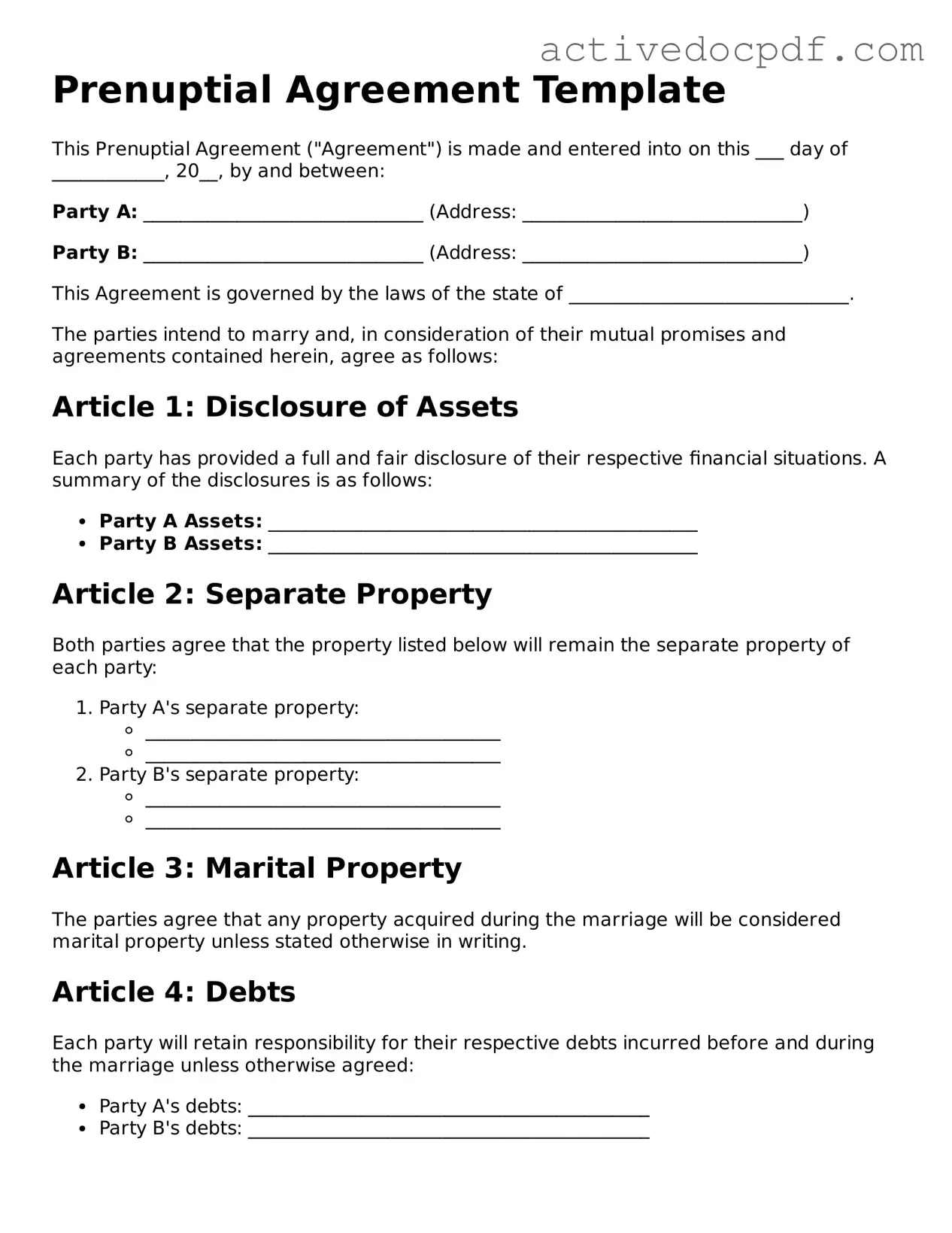Legal Prenuptial Agreement Template
A prenuptial agreement, often referred to as a prenup, is a legal document created by two individuals before they marry. This form outlines the division of assets and financial responsibilities in the event of a divorce or separation. By establishing clear terms, a prenup can help protect both parties and provide peace of mind as they embark on their marital journey.
Edit Form Online
